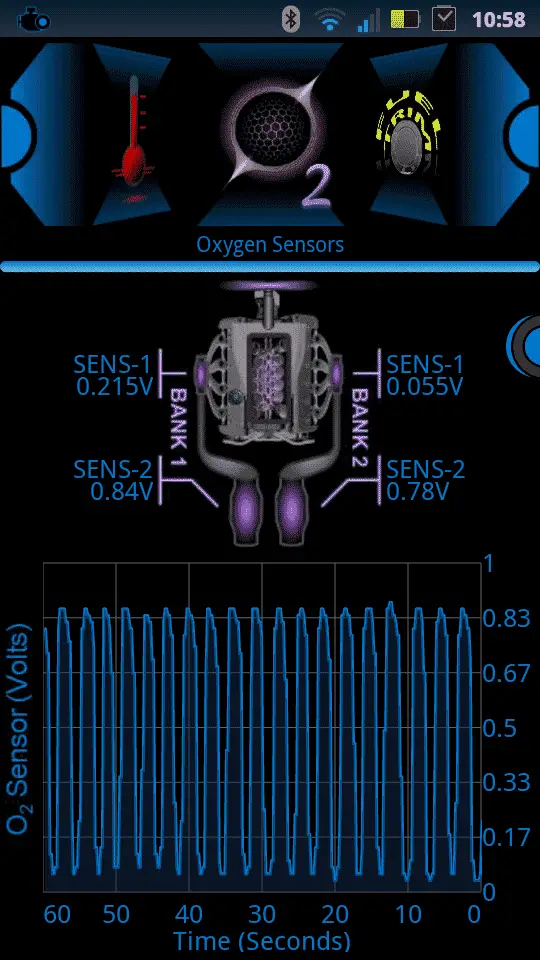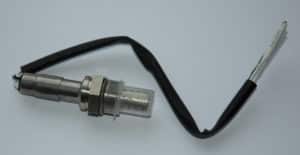
The Telltale Signs of a Bad Oxygen (O2) Sensor
The oxygen sensor is a common staple in modern car engines. It is used to monitor the real-time air/fuel ratio of the vehicle to instantly determine if the ratio is rich or lean. With that being said, the oxygen sensor constantly monitors the hot gasses that pass through the exhaust manifold. It then relays the information to the CPU, and the computer will adjust the air/fuel ratio in order to produce the right kind of burn that will maximize engine performance and reduce harmful emissions.

Did you know that more than 60% of smog or emissions test failures are the result of a bad oxygen sensor? If your car has a bad or defective oxygen sensor, it would be difficult to pass the emissions test, whether the check engine light is illuminated or not. A faulty oxygen sensor can also cause serious damage to the catalytic converter, which will typically cost you thousands of dollars to replace.
The oxygen sensor is a simple electronic device, about the size of a regular spark plug. It is usually located in the exhaust manifold of your vehicle, but modern cars can have as many as 4 to 6 oxygen sensors depending on engine type. Modern OBD-II equipped vehicles will also have oxygen sensors installed near the catalytic converter, sometimes referred to as ‘O2 sensor rear’, since the ‘O2 sensor front’ is located in the exhaust manifold.
Rich and Lean: What’s the Difference?
If your engine is running rich, it simply means that there is more unburned fuel in the exhaust. This scenario creates a lot of pollution in the form of hydrocarbons.
If your engine is running lean, it means that there is more oxygen in the exhaust. This scenario will create a lot of nitrogen-oxide pollutants in your vehicle exhaust, which contributes to smog and acid rain.
Remember that the oxygen sensor does not monitor the amount of air and fuel entering the engine. It actually compares the oxygen reading of the exhaust gas to the outside air. The difference between the oxygen levels of the exhaust relative to the oxygen levels of outside air creates a voltage to flow inside the O2 sensor, and this reading is then relayed to the vehicle CPU. The CPU will then adjust the air/fuel ratio to provide the right balance between power, economy and low emissions.
Types of Oxygen Sensors
There are generally two types of oxygen sensors:
1. Unheated O2 sensors – generally has 1 or 2 wires and can be found on older vehicles 1976 to 1990 models. Unheated O2 sensors need to be replaced every 30,000 to 50,000 miles.
2. Heated O2 sensors – generally have 3 or 4 wires and can be found on newer vehicles 1990 to present. Heated O2 sensors can be replaced every 60,000 to 100,000 miles.
Oxygen sensors are extremely rugged and resilient, and they have to be. Think about it: these sensors are constantly exposed to hot and noxious gasses while the engine is running or idling. If your engine has an oil leak, or if the engine block is damaged, the oxygen sensor can get worn out pretty quickly as the exhaust is now polluted with contaminants such as oil and engine coolant. Worst of all, it can also damage the catalytic converter in the long run.
The Telltale Signs of a Bad Oxygen Sensor
Lookout for these warning signs. In the absence of a check engine light or malfunction indicator light (MIL), these telltale signs might mean a bad oxygen sensor:
- Poor MPG, or a sudden drop in fuel mileage. Less than having an actual fuel leak, if you notice that your car is gulping down more fuel, then you need to check the O2 sensors of your vehicle.
- Poor vehicle performance, including engine stalling, rough idling, weak acceleration or hesitation.
- A strong odor from the exhaust.
- Car turns off when stopped
If your car has a bad oxygen sensor, your vehicle CPU will fail to perform a closed-loop operation, which is defined as an alternating state between rich and lean air/fuel ratio, such as when idling or accelerating gently.
This means that your vehicle will constantly run in open-loop mode, which is the default setting when the throttle is wide open or when pressing hard on the accelerator pedal. In open-loop mode, your engine CPU will automatically enrich the air/fuel mixture. Keep in mind that when your vehicle CPU is in open-loop mode, it will ignore the readings of the O2 sensor.
Conclusion
If you feel that your vehicle is gulping down more fuel than the usual, or if you feel the telltale signs of a bad oxygen sensor, have your car checked immediately. If the check engine warning light is on, you can use an obd2 scanner like the BAFX Products 34t5 OBD-II Scan Tool to quickly determine the fault code. Ignoring certain warning signs is not healthy, as it can lead to serious engine damage and expensive repair bills.